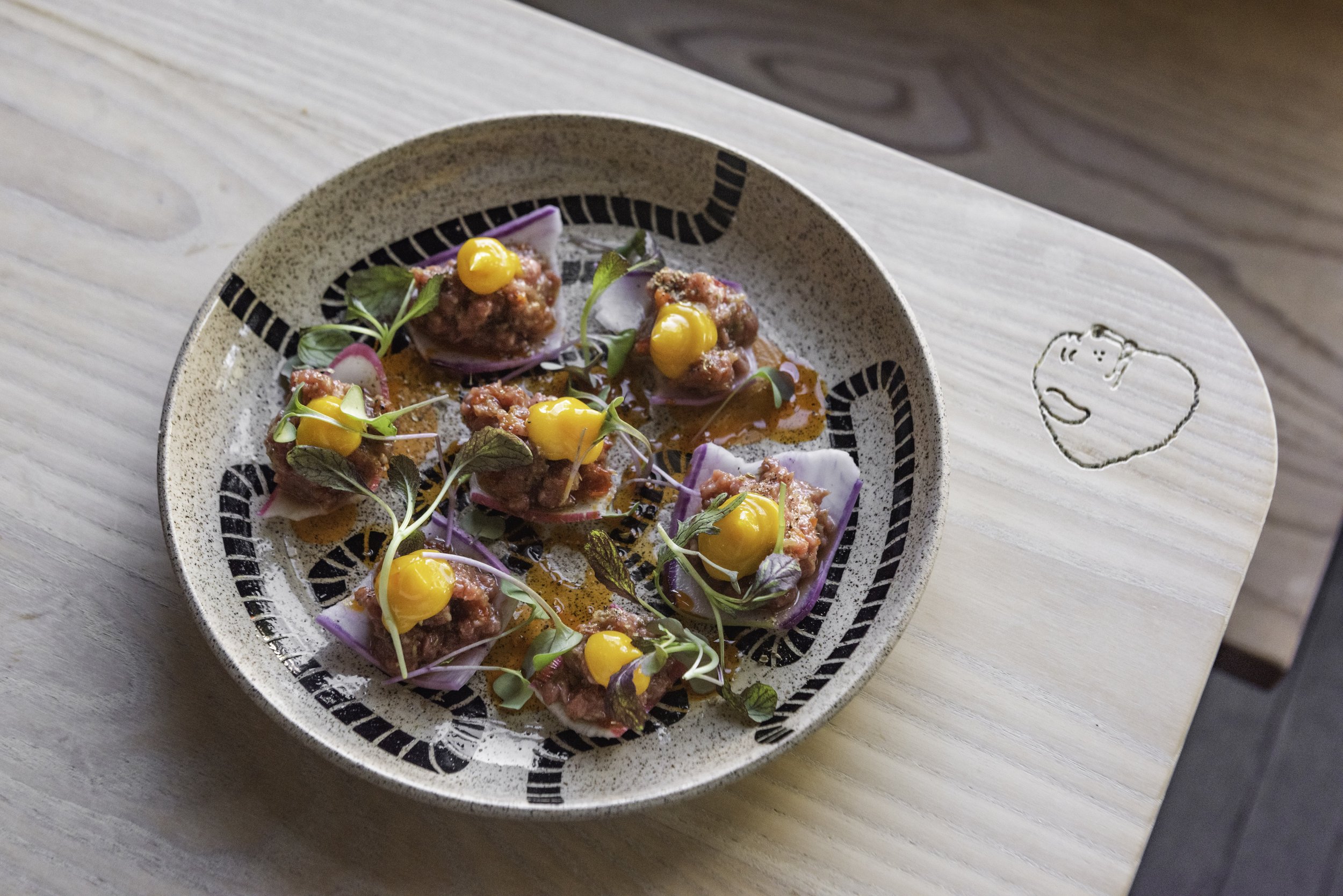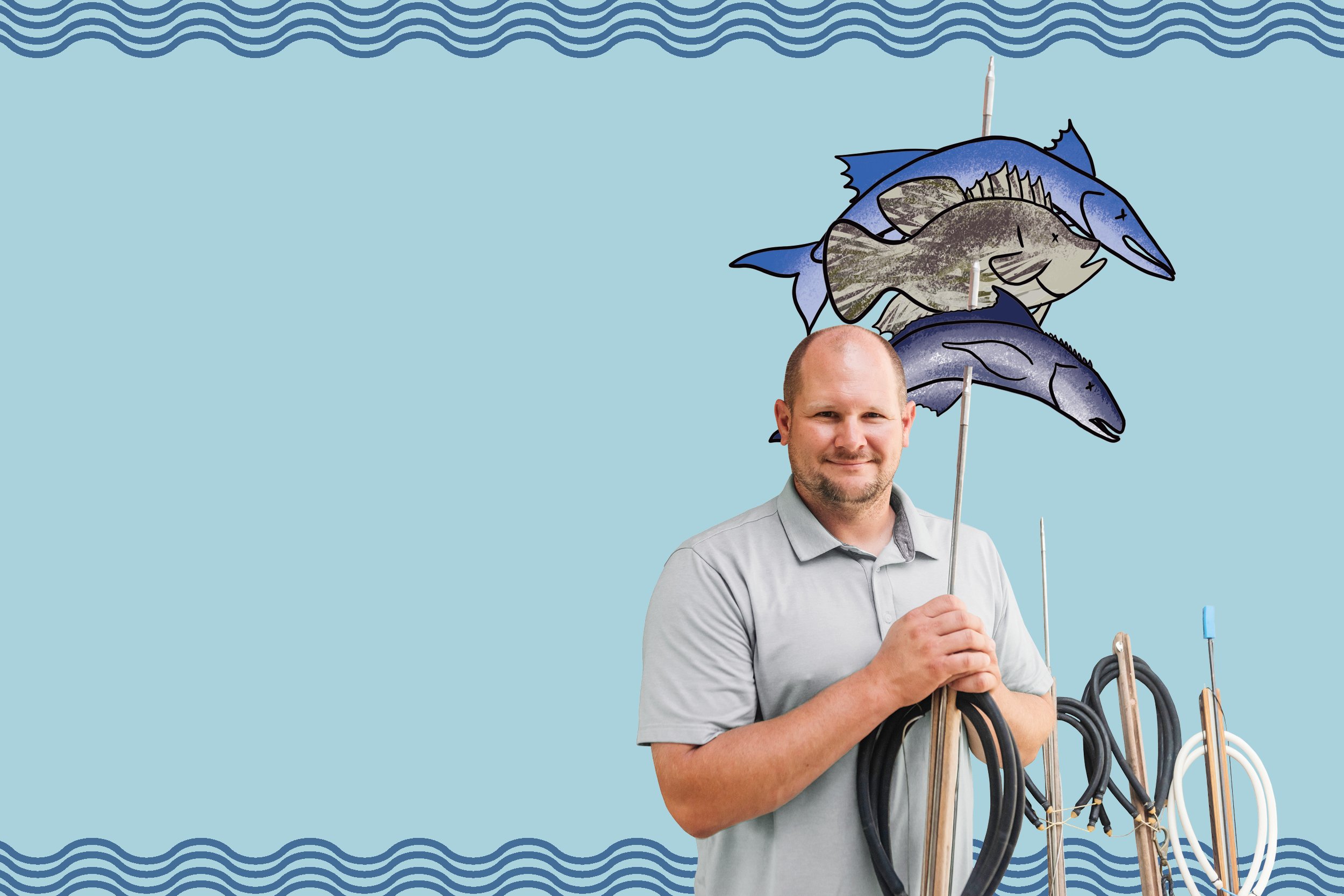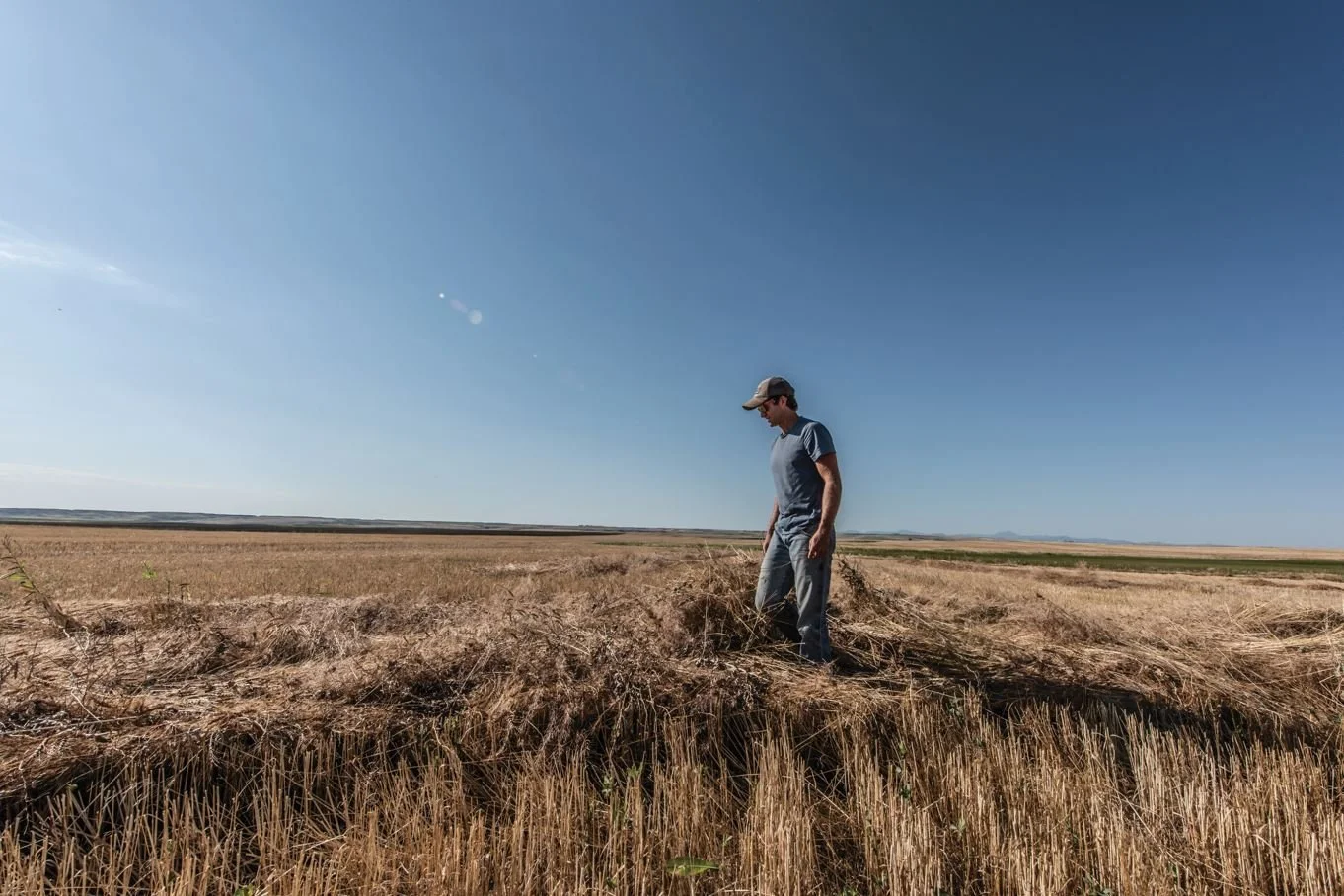Spearing for Service
Spearfishing turned from a hobby to a business for fisherman Chris Ricouard, opening the door to a network of chefs.
For Spearfisher Chris Ricouard, the greatest thing about spearfishing and getting fish to restaurants, is being able to cut out the middleman. “There are days where we’ll shoot the fish and it’s [at] their back door within two hours,” he says. What started as a way to combine his Marine Corps training and hobbies (diving, hunting, and fishing) turned into a fruitful business, a statement on sustainability, and a way for chefs to find themselves with products that would have never been previously offered to them by traditional fish houses.
10 years ago, when Ricouard started spearfishing in the gulf off of Louisiana, he was often coming back with more fish than he could consume or give away. So his business senses kicked in, and realizing he could bring fish directly to the restaurant. “You start with a basic fishing license,” says Ricouard. “From there, you have to get a commercial fishing license and a gear license to use the spear, which allows you to harvest and sell.” He then received his consumer fishing license and reached out to a chef friend in Gretna to make a sale, and word got around from there.
Ricouard obtained a wholesale mobile license, which allows him to legally deliver fish from his truck. So when he takes people diving, he pays for what they shoot and completes the state and federal paperwork—a Louisiana trip ticket to track how much the fish is being shot and caught. “It keeps people honest,” he says. “You can only sell two cobia per person per day. For me though, I could have 100 cobia, but I better have 50 trip tickets. It’s for sustainability too, so you aren't just out there wearing them out. There are lots of rules and regs, but the state keeps you in check.”
What makes spearfishing in Louisiana different from say, Destin, are the oil rigs that serve as man-made reefs for the fish. But unlike live reefs, there is no worry or concern when it comes to decay. So fish flock to these rigs, hovering in layers based on size. Deeper dives are reserved for cobia and triple tail. But it’s the surface intervals that got interesting for Ricouard and his crew. Still wanting to stay active in the water, they started free diving with spears, and found themselves face-to-face with barracuda, and lots of them. Barracuda are typically a bycatch. Ricouard was used to participating in barracuda spearing tournaments where the day's kill would be thrown to the gators at the end. When his customer, Ben Tabor of Sneaky Pickle and Bar Brine, caught wind of this, he knew he could utilize the barracuda on his menu.
ben Tabor and Richard jACKSON OF BAR BRINE and Sneaky Pickle | Photos: Will Blunt
Bar Brine’s Grilled Barracuda, Tomato Sauce, Anchovies, Roasted Garlic Oil, Roasted Summer Squash, Olive Oil, Basil
The meat of barracuda is similar to a king mackerel, providing a full fat, savory filet. And in application, can either handle as much or as little as the chef gives it. In a past iteration on the Bar Brine menu, Chef Richard Jackson leans into the meaty fish with summer squash caponata, letting the smack of acid from tomatoes and brine from capers and anchovies marry the unctuous oils.
“Because I know these fish are going to consumers, I have an overkill of ice on board,” says Ricouard. “I bring double ice to make sure everything is completely packed and fresh. We could gut the fish as we are going, but that hasn't been a need. We sell our fish whole, as is.” Ricouard’s fish makes its way to many of the top seafood destinations in the city. Over at GW Fins, Chef Michael Nelson is dry-aging Ricouard’s fish, hanging half a blue fin—he's getting rib and loin meat that looks like a tomahawk steak. At Pêche, Chefs Ryan Prewitt and Nicole Mills source triple tail, cobia, and barracuda from Ricouard—they cook most of his fish on the grill, skin- and scale-on, allowing the fat layer under the skin to tenderize the meat throughout. “I really can’t overemphasize how important people like Chris are to Pêche,” says Prewitt. “Without people like him, we would never be able to be the restaurant that we are.”
Over the years, Ricouard has learned that every restaurant treats his fish in a unique way. “Seeing all the different aspects is really cool,” he adds. “And I get the benefits of trying it all.”









